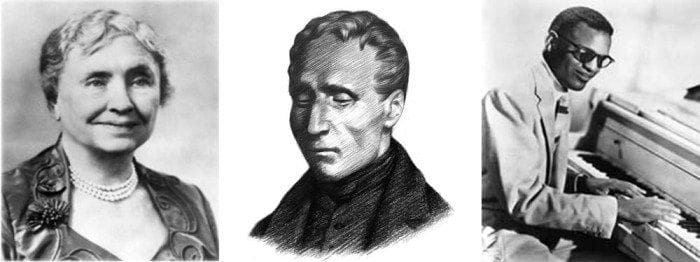
Famous People with Eye Problems
Historically Famous People with Blindness or Visual Impairments
Blindness is the condition of lacking visual perception due to physiological and/or neurological factors. Complete blindness is the total lack of form and light perception and is clinically recorded as “No Light Perception” or “NPL”. Eye injuries, mostly occurring in people under 30, are the leading cause of monocular blindness (vision loss in one eye). People who are blind or visually impaired have devised a number of techniques that allow them to complete daily activities using their remaining senses and recently created accessible technology such as screen reading software enables visually impaired people to use mainstream computer applications including the Internet. Listed below are historically famous people with visual impairments including total blindness, sight conditions, or blindness in one eye.
NOTE: I have taken this list from www.brailleworks.com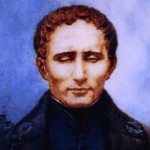 Louis Braille (January 4, 1809 – January 6, 1852): Louis Braille became blind after he accidentally stabbed himself in the eye with his father’s awl. He later became an inventor and the designer of braille writing, which enables people who are blind to read by feeling a series of organized bumps representing letters. This concept was beneficial to all blind people from around the world and is still commonly used today. If it were not for Louis Braille’s blindness he may not have invented this method of reading and no other blind person could have enjoyed a story or been able to comprehend important written materials.
Louis Braille (January 4, 1809 – January 6, 1852): Louis Braille became blind after he accidentally stabbed himself in the eye with his father’s awl. He later became an inventor and the designer of braille writing, which enables people who are blind to read by feeling a series of organized bumps representing letters. This concept was beneficial to all blind people from around the world and is still commonly used today. If it were not for Louis Braille’s blindness he may not have invented this method of reading and no other blind person could have enjoyed a story or been able to comprehend important written materials.
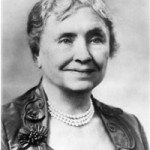 Helen Adams Keller (June 27, 1880 – June 1, 1968): Helen Adams Keller was an American author, activist and lecturer. She was the first deaf/blind person to graduate from college. She was not born blind and deaf; it was not until nineteen months of age that she came down with an illness described by doctors as “an acute congestion of the stomach and the brain”, which could have possibly been scarlet fever or meningitis. The illness did not last for a particularly long time, but it left her deaf and blind. Keller went on to become a world-famous speaker and author. She is remembered as an advocate for people with disabilities amid numerous other causes.
Helen Adams Keller (June 27, 1880 – June 1, 1968): Helen Adams Keller was an American author, activist and lecturer. She was the first deaf/blind person to graduate from college. She was not born blind and deaf; it was not until nineteen months of age that she came down with an illness described by doctors as “an acute congestion of the stomach and the brain”, which could have possibly been scarlet fever or meningitis. The illness did not last for a particularly long time, but it left her deaf and blind. Keller went on to become a world-famous speaker and author. She is remembered as an advocate for people with disabilities amid numerous other causes.
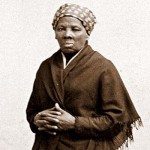 Harriet Tubman (c. “in approximately” 1820 – March 10, 1913): Harriet Tubman was a slave throughout her youth, being treated as an animal until she eventually escaped captivity. She was an abolitionist, humanitarian, and Union spy during the American Civil War. When she had reached Canada she did not stay to enjoy her freedom. She returned to the lands and brought hundreds of black slaves back to safety, saving them from slavery by escaping in what was then called The Underground Railroad. After a severe wound to the head, which was inflicted by a slave owner before her escape, she became a victim to vision impairment and seizures. That did not keep her from tossing her fears aside and to keep fighting for the freedom of her people.
Harriet Tubman (c. “in approximately” 1820 – March 10, 1913): Harriet Tubman was a slave throughout her youth, being treated as an animal until she eventually escaped captivity. She was an abolitionist, humanitarian, and Union spy during the American Civil War. When she had reached Canada she did not stay to enjoy her freedom. She returned to the lands and brought hundreds of black slaves back to safety, saving them from slavery by escaping in what was then called The Underground Railroad. After a severe wound to the head, which was inflicted by a slave owner before her escape, she became a victim to vision impairment and seizures. That did not keep her from tossing her fears aside and to keep fighting for the freedom of her people.
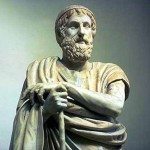 Homer (Unknown): A legendary ancient Greek epic poet, traditionally said to be the author of the epic poems the Iliad and the Odyssey. He was also said to have been blind. The ancient Greeks generally believed that Homer was a historical individual, but modern scholars are skeptical because no reliable biographical information has been handed down from classical antiquity, and the poems themselves manifestly represent the culmination of many centuries of oral story-telling and a well-developed “formulaic” system of poetic composition. The date of Homer’s existence was controversial in antiquity and is no less so today. Herodotus said that Homer lived 400 years before his own time, which would place him at around 850 BC; but other ancient sources gave dates much closer to the supposed time of the Trojan War (1194 – 1184 BC). The formative influence of the works of Homer in shaping and influencing the whole development of Greek culture was recognized by many Greeks themselves, who considered him to be their instructor.
Homer (Unknown): A legendary ancient Greek epic poet, traditionally said to be the author of the epic poems the Iliad and the Odyssey. He was also said to have been blind. The ancient Greeks generally believed that Homer was a historical individual, but modern scholars are skeptical because no reliable biographical information has been handed down from classical antiquity, and the poems themselves manifestly represent the culmination of many centuries of oral story-telling and a well-developed “formulaic” system of poetic composition. The date of Homer’s existence was controversial in antiquity and is no less so today. Herodotus said that Homer lived 400 years before his own time, which would place him at around 850 BC; but other ancient sources gave dates much closer to the supposed time of the Trojan War (1194 – 1184 BC). The formative influence of the works of Homer in shaping and influencing the whole development of Greek culture was recognized by many Greeks themselves, who considered him to be their instructor.
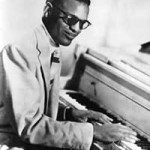 Ray Charles (September 23, 1930 – June 10, 2004): Known by his stage name Ray Charles, he was an American pianist and musician who shaped the sound of rhythm and blues. He brought a soulful sound to country music, pop standards, and a rendition of “America the Beautiful” that Ed Bradley of 60 Minutes called the “definitive version of the song, an American anthem.” In 1965, Charles was arrested for possession of heroin, a drug to which he had been addicted for nearly 20 years. It was his third arrest for the offense, but he avoided jail time after kicking the habit in a clinic in Los Angeles. He spent a year on parole in 1966. Ray also appeared in the 1980 hit movie, The Blues Brothers and Frank Sinatra called him “the only true genius in the business.” In 2004, Rolling Stone Magazine ranked Charles number ten on their list of the 100 Greatest Artists of All Time and also voted him number two on their list of The 100 Greatest Singers of All Time.
Ray Charles (September 23, 1930 – June 10, 2004): Known by his stage name Ray Charles, he was an American pianist and musician who shaped the sound of rhythm and blues. He brought a soulful sound to country music, pop standards, and a rendition of “America the Beautiful” that Ed Bradley of 60 Minutes called the “definitive version of the song, an American anthem.” In 1965, Charles was arrested for possession of heroin, a drug to which he had been addicted for nearly 20 years. It was his third arrest for the offense, but he avoided jail time after kicking the habit in a clinic in Los Angeles. He spent a year on parole in 1966. Ray also appeared in the 1980 hit movie, The Blues Brothers and Frank Sinatra called him “the only true genius in the business.” In 2004, Rolling Stone Magazine ranked Charles number ten on their list of the 100 Greatest Artists of All Time and also voted him number two on their list of The 100 Greatest Singers of All Time.
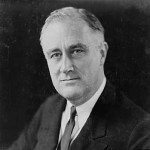 Franklin Delano Roosevelt (January 30, 1882 – April 12, 1945): Franklin, sometimes better known as FDR; was the 32nd President of the United States of America and played a big role during World War II. Roosevelt eventually aided the poor and unemployed of America and restored order at various times during his presidency. Elected to four terms in office, he served from 1933 to 1945 and is the only U.S. president to have served more than two terms mostly because of his help in the recovery of the economy. It has been said that Roosevelt had several disabilities including vision impairment.
Franklin Delano Roosevelt (January 30, 1882 – April 12, 1945): Franklin, sometimes better known as FDR; was the 32nd President of the United States of America and played a big role during World War II. Roosevelt eventually aided the poor and unemployed of America and restored order at various times during his presidency. Elected to four terms in office, he served from 1933 to 1945 and is the only U.S. president to have served more than two terms mostly because of his help in the recovery of the economy. It has been said that Roosevelt had several disabilities including vision impairment.
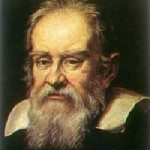 Galileo Galilei (February 15, 1564 – January 8, 1642): Galileo Galilei was a Tuscan (Italian) astronomer, mathematician, physicist, and philosopher being greatly responsible for the scientific revolution. Some of his accomplishments include improvements to the telescope, accelerated motion and astronomical observations. Galileo was the first to discover the four largest satellites (moons) of Jupiter which were named the Galilean moons in his honor. Galileo had also improved compass design and eventually opposed the geocentric view. His sight started to deteriorate at the age of 68 years old and it eventually led to complete blindness.
Galileo Galilei (February 15, 1564 – January 8, 1642): Galileo Galilei was a Tuscan (Italian) astronomer, mathematician, physicist, and philosopher being greatly responsible for the scientific revolution. Some of his accomplishments include improvements to the telescope, accelerated motion and astronomical observations. Galileo was the first to discover the four largest satellites (moons) of Jupiter which were named the Galilean moons in his honor. Galileo had also improved compass design and eventually opposed the geocentric view. His sight started to deteriorate at the age of 68 years old and it eventually led to complete blindness.
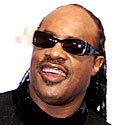 Stevie Wonder (May 13, 1950 – Present): Born Steveland Hardaway Judkins, he later changed his name to Steveland Hardaway Morris. Wonder is an American singer-songwriter, multi-instrumentalist, and record producer. Blind from infancy, Wonder signed with Motown Records as a pre-adolescent at the age of twelve, and continues to perform and record for the label to this day. It is thought that he received excessive oxygen in his incubator which led to retinopathy of prematurity, a destructive ocular disorder affecting the retina. It is characterized by abnormal growth of blood vessels, scarring, and sometimes retinal detachment. A prominent figure in popular music during the latter half of the 20th century, Wonder has recorded more than thirty U.S. top ten hits and won twenty-two Grammy Awards (the most ever won by a solo artist) as well as a Lifetime Achievement Award. He has also won an Academy Award for Best Song, and been inducted into both the Rock and Roll and Songwriters halls of fame. He has also been awarded the Polar Music Prize. American music magazine Rolling Stone named the ninth greatest singer of all time.
Stevie Wonder (May 13, 1950 – Present): Born Steveland Hardaway Judkins, he later changed his name to Steveland Hardaway Morris. Wonder is an American singer-songwriter, multi-instrumentalist, and record producer. Blind from infancy, Wonder signed with Motown Records as a pre-adolescent at the age of twelve, and continues to perform and record for the label to this day. It is thought that he received excessive oxygen in his incubator which led to retinopathy of prematurity, a destructive ocular disorder affecting the retina. It is characterized by abnormal growth of blood vessels, scarring, and sometimes retinal detachment. A prominent figure in popular music during the latter half of the 20th century, Wonder has recorded more than thirty U.S. top ten hits and won twenty-two Grammy Awards (the most ever won by a solo artist) as well as a Lifetime Achievement Award. He has also won an Academy Award for Best Song, and been inducted into both the Rock and Roll and Songwriters halls of fame. He has also been awarded the Polar Music Prize. American music magazine Rolling Stone named the ninth greatest singer of all time.
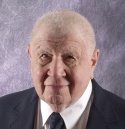 Dr. Abraham Nemeth (October 16, 1918 – October 2, 2013): Dr. Nemeth was an American mathematician and inventor. He was Professor of Mathematics at the University of Detroit Mercy in Detroit, Michigan. Though his employers were sometimes reluctant to hire him knowing that he was blind, his reputation grew as it became apparent that he was a capable mathematician and teacher. He developed the Nemeth Braille Code for Mathematics and Science Notation in 1952. Nemeth Code has gone through 4 revisions since its initial development and continues in wide use today. Dr. Nemeth is also responsible for the rules of MathSpeak, a system for orally communicating mathematical text. Dr. Nemeth is an active member of the National Federation of the Blind. He has written several short stories and made many speeches for the NFB about his life as a blind mathematician.
Dr. Abraham Nemeth (October 16, 1918 – October 2, 2013): Dr. Nemeth was an American mathematician and inventor. He was Professor of Mathematics at the University of Detroit Mercy in Detroit, Michigan. Though his employers were sometimes reluctant to hire him knowing that he was blind, his reputation grew as it became apparent that he was a capable mathematician and teacher. He developed the Nemeth Braille Code for Mathematics and Science Notation in 1952. Nemeth Code has gone through 4 revisions since its initial development and continues in wide use today. Dr. Nemeth is also responsible for the rules of MathSpeak, a system for orally communicating mathematical text. Dr. Nemeth is an active member of the National Federation of the Blind. He has written several short stories and made many speeches for the NFB about his life as a blind mathematician.
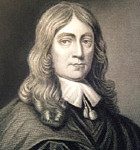 John Milton (December 9, 1608 – November 8, 1674): John Milton was a civil servant, English poet and prose polemicist. Milton was well known through his epic poem Paradise Lost and also for his radical views on republican religion. He never was well adjusted in school and once got expelled for having a fist fight with his tutor. Eventually he began to write poetry in English, Latin and Italian. John Milton became blind at the age of 43 in 1651, and has written books containing quotes of how the experience sometimes made him miserable.
John Milton (December 9, 1608 – November 8, 1674): John Milton was a civil servant, English poet and prose polemicist. Milton was well known through his epic poem Paradise Lost and also for his radical views on republican religion. He never was well adjusted in school and once got expelled for having a fist fight with his tutor. Eventually he began to write poetry in English, Latin and Italian. John Milton became blind at the age of 43 in 1651, and has written books containing quotes of how the experience sometimes made him miserable.
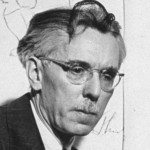 James Thurber (December 8, 1894 – November 2, 1961): James Thurber was a comedian and cartoonist most known for his contributions to New Yorker Magazine. Thurber had two brothers, William and Robert. Once, while playing a game, his brother William shot James in the eye with an arrow. Because of the lack of medical technology, Thurber lost his eye. This injury would later cause him to be almost entirely blind. During his childhood he was unable to participate in sports and activities because of his injury, and instead developed a creative imagination, which he shared in his writings.
James Thurber (December 8, 1894 – November 2, 1961): James Thurber was a comedian and cartoonist most known for his contributions to New Yorker Magazine. Thurber had two brothers, William and Robert. Once, while playing a game, his brother William shot James in the eye with an arrow. Because of the lack of medical technology, Thurber lost his eye. This injury would later cause him to be almost entirely blind. During his childhood he was unable to participate in sports and activities because of his injury, and instead developed a creative imagination, which he shared in his writings.
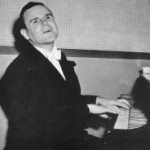 Alec Templeton (July 4, 1909 – March 28, 1963): Alec was a composer, pianist and satirist. Blind from birth, he studied at London’s Royal Academy. In 1936, he moved from Wales to the United States as a member of Jack Hylton’s Jazz Band, where he played with a number of orchestras and gave his first radio performances on The Rudy Vallée Show, The Chase and Sanborn Hour, Kraft Music Hall and The Magic Key. His radio program, Alec Templeton Time, sponsored by Alka-Seltzer, was first broadcast from 1939 to 1941, returning in 1943 and 1946–47. It was sometimes known as The Alec Templeton Show. He memorized the scripts for his shows by having them read to him 20 times. There is some confusion concerning Alec Templeton’s year of birth. Most published and Internet biographies give his birth year as 1909, but his headstone shows 1910 as his year of birth. He died at age 52 or 53 and is interred at Putnam Cemetery in Greenwich, Connecticut.
Alec Templeton (July 4, 1909 – March 28, 1963): Alec was a composer, pianist and satirist. Blind from birth, he studied at London’s Royal Academy. In 1936, he moved from Wales to the United States as a member of Jack Hylton’s Jazz Band, where he played with a number of orchestras and gave his first radio performances on The Rudy Vallée Show, The Chase and Sanborn Hour, Kraft Music Hall and The Magic Key. His radio program, Alec Templeton Time, sponsored by Alka-Seltzer, was first broadcast from 1939 to 1941, returning in 1943 and 1946–47. It was sometimes known as The Alec Templeton Show. He memorized the scripts for his shows by having them read to him 20 times. There is some confusion concerning Alec Templeton’s year of birth. Most published and Internet biographies give his birth year as 1909, but his headstone shows 1910 as his year of birth. He died at age 52 or 53 and is interred at Putnam Cemetery in Greenwich, Connecticut.
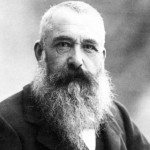 Claude Monet (November 14, 1840 – December 5, 1926): Also known as Oscar-Claude Monet or Claude Oscar Monet, he was a founder of French impressionist painting, and the most consistent and prolific practitioner of the movement’s philosophy of expressing one’s perceptions before nature, especially as applied to plein-air landscape painting. The term “Impressionism” is derived from the title of his painting Impression, Sunrise. His popularity and fame grew and by 1907 he had painted many well-known paintings, but by then he had “his first problem with his eyesight.” He started to go blind. He still painted, though his eyes got worse. He wouldn’t stop painting until he was nearly blind. In the last decade of his life Monet, nearly blind, painted a group of large water lily murals for the Musée de l’Orangerie (art gallery of impressionist and post-impressionist paintings located on the Place de la Concorde, Paris) in Paris.
Claude Monet (November 14, 1840 – December 5, 1926): Also known as Oscar-Claude Monet or Claude Oscar Monet, he was a founder of French impressionist painting, and the most consistent and prolific practitioner of the movement’s philosophy of expressing one’s perceptions before nature, especially as applied to plein-air landscape painting. The term “Impressionism” is derived from the title of his painting Impression, Sunrise. His popularity and fame grew and by 1907 he had painted many well-known paintings, but by then he had “his first problem with his eyesight.” He started to go blind. He still painted, though his eyes got worse. He wouldn’t stop painting until he was nearly blind. In the last decade of his life Monet, nearly blind, painted a group of large water lily murals for the Musée de l’Orangerie (art gallery of impressionist and post-impressionist paintings located on the Place de la Concorde, Paris) in Paris.
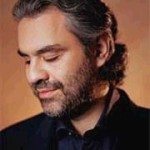 Andrea Angel Bocelli (September 22, 1958 – Present): Andrea is an Italian tenor and has recorded over 20 pop and classical albums, as well as seven complete operas. He has sold over 65 million albums worldwide. It was evident at birth that he had problems with his sight, and after visits to many doctors Bocelli was diagnosed with glaucoma. In 1970, at the age of 12, he completely lost his sight after an accident during a soccer game. As a young boy, Bocelli showed a great passion for music. At the age of six he started piano lessons before he also learned to play the flute, saxophone, trumpet, trombone, harp, guitar and drums. Bocelli once said “I don’t think a singer decides to sing, it is the others who choose that you sing by their reactions.” Bocelli has sung with other great singers such as Pavarotti and has only been further admired due to his blindness.
Andrea Angel Bocelli (September 22, 1958 – Present): Andrea is an Italian tenor and has recorded over 20 pop and classical albums, as well as seven complete operas. He has sold over 65 million albums worldwide. It was evident at birth that he had problems with his sight, and after visits to many doctors Bocelli was diagnosed with glaucoma. In 1970, at the age of 12, he completely lost his sight after an accident during a soccer game. As a young boy, Bocelli showed a great passion for music. At the age of six he started piano lessons before he also learned to play the flute, saxophone, trumpet, trombone, harp, guitar and drums. Bocelli once said “I don’t think a singer decides to sing, it is the others who choose that you sing by their reactions.” Bocelli has sung with other great singers such as Pavarotti and has only been further admired due to his blindness.
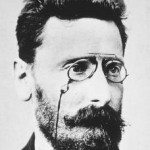 Joseph Pulitzer (April 10, 1847 – October 29, 1911): Joseph was a Hungarian-American publisher best known for posthumously establishing the Pulitzer Prizes (along with William Randolph Hearst) and for originating yellow journalism. In 1882 Pulitzer purchased the New York World, a newspaper that had been losing $40,000 a year, for $346,000 from Jay Gould. Pulitzer shifted its focus to human-interest stories, scandal, and sensationalism. At the age of 42 Joseph became blind due to retinal detachment leaving him no choice but to retire.
Joseph Pulitzer (April 10, 1847 – October 29, 1911): Joseph was a Hungarian-American publisher best known for posthumously establishing the Pulitzer Prizes (along with William Randolph Hearst) and for originating yellow journalism. In 1882 Pulitzer purchased the New York World, a newspaper that had been losing $40,000 a year, for $346,000 from Jay Gould. Pulitzer shifted its focus to human-interest stories, scandal, and sensationalism. At the age of 42 Joseph became blind due to retinal detachment leaving him no choice but to retire.
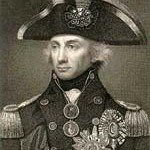 Horatio Nelson (September 29, 1758 – October 21, 1805): Nelson was a British flag officer famous for his service in the Royal Navy, particularly during the Napoleonic Wars. Nelson was born into a moderately prosperous Norfolk family, and joined the navy through the influence of his uncle, Maurice Suckling. He rose rapidly through the ranks and served with leading naval commanders of the period before obtaining his own command in 1778. He developed a reputation in the service through his personal valor and firm grasp of tactics, but suffered periods of illness and unemployment after the end of the American War of Independence. The outbreak of the French Revolutionary Wars allowed Nelson to return to service, where he was particularly active in the Mediterranean. He was wounded several times in combat, losing most of one arm and the sight in one eye. He won several victories, including the Battle of Trafalgar in 1805, during which he was killed. His death at Trafalgar secured his position as one of England’s most heroic figures.
Horatio Nelson (September 29, 1758 – October 21, 1805): Nelson was a British flag officer famous for his service in the Royal Navy, particularly during the Napoleonic Wars. Nelson was born into a moderately prosperous Norfolk family, and joined the navy through the influence of his uncle, Maurice Suckling. He rose rapidly through the ranks and served with leading naval commanders of the period before obtaining his own command in 1778. He developed a reputation in the service through his personal valor and firm grasp of tactics, but suffered periods of illness and unemployment after the end of the American War of Independence. The outbreak of the French Revolutionary Wars allowed Nelson to return to service, where he was particularly active in the Mediterranean. He was wounded several times in combat, losing most of one arm and the sight in one eye. He won several victories, including the Battle of Trafalgar in 1805, during which he was killed. His death at Trafalgar secured his position as one of England’s most heroic figures.
 Marla Runyan (January 4, 1969 – Present): Marla Runyan is a marathon runner who is legally blind. She is a three-time national champion in the women’s 5,000 meters. Runyan’s career as a world-class runner began in 1999 at the Pan American Games, where she won the 1,500-meter race. The next year, she placed eighth in the 1,500-meter in the 2000 Sydney Olympics, making Runyan the first legally blind athlete to compete in the Games and the highest finish by an American woman in that event. In 2002 she finished as the top American at the 2002 New York City Marathon with a time of 2 hours, 27 minutes and 10 seconds to post the second-fastest debut time ever by an American woman.
Marla Runyan (January 4, 1969 – Present): Marla Runyan is a marathon runner who is legally blind. She is a three-time national champion in the women’s 5,000 meters. Runyan’s career as a world-class runner began in 1999 at the Pan American Games, where she won the 1,500-meter race. The next year, she placed eighth in the 1,500-meter in the 2000 Sydney Olympics, making Runyan the first legally blind athlete to compete in the Games and the highest finish by an American woman in that event. In 2002 she finished as the top American at the 2002 New York City Marathon with a time of 2 hours, 27 minutes and 10 seconds to post the second-fastest debut time ever by an American woman.
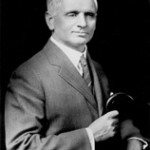 Thomas Gore (December 10, 1870 – March 16, 1949): Thomas was a Democratic politician. He became blind as a child through two separate accidents but did not give up his dream of becoming a senator. In 1907, he was elected to the Senate as one of the first two senators from the new state of Oklahoma. He was re-elected in 1908 and 1914 but defeated in 1920. He was known as a member of the progressive wing of the Democratic Party, who worked with Republicans such as Robert La Follette. He was to a large extent no different from any other politician because of his blindness, but there were problems, as La Follette recounts an example in his memoirs when, during a filibuster, Gore did not realize that the senator who was to take over speaking for him had left the room, and the filibuster failed because he did not continue to speak.
Thomas Gore (December 10, 1870 – March 16, 1949): Thomas was a Democratic politician. He became blind as a child through two separate accidents but did not give up his dream of becoming a senator. In 1907, he was elected to the Senate as one of the first two senators from the new state of Oklahoma. He was re-elected in 1908 and 1914 but defeated in 1920. He was known as a member of the progressive wing of the Democratic Party, who worked with Republicans such as Robert La Follette. He was to a large extent no different from any other politician because of his blindness, but there were problems, as La Follette recounts an example in his memoirs when, during a filibuster, Gore did not realize that the senator who was to take over speaking for him had left the room, and the filibuster failed because he did not continue to speak.
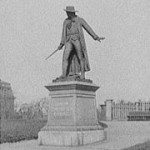 William Prescott (February 20, 1726 – October 13, 1795): Prescott was an American colonel in the Revolutionary War who commanded the rebel forces in the Battle of Bunker Hill. Prescott became widely attributed for the famous quote, “Do not fire until you see the whites of their eyes,” an important instruction to his soldiers in order to conserve ammunition. The former town of Prescott, Massachusetts, was named in his honor. The town was dis-incorporated in 1938 as part of the building of the Quabbin Reservoir, and the land now makes up Prescott Peninsula, which divides the main branches of the reservoir. Prescott’s likeness was made into a statue for a memorial for the Battle of Bunker Hill.
William Prescott (February 20, 1726 – October 13, 1795): Prescott was an American colonel in the Revolutionary War who commanded the rebel forces in the Battle of Bunker Hill. Prescott became widely attributed for the famous quote, “Do not fire until you see the whites of their eyes,” an important instruction to his soldiers in order to conserve ammunition. The former town of Prescott, Massachusetts, was named in his honor. The town was dis-incorporated in 1938 as part of the building of the Quabbin Reservoir, and the land now makes up Prescott Peninsula, which divides the main branches of the reservoir. Prescott’s likeness was made into a statue for a memorial for the Battle of Bunker Hill.
 Joseph Plateau (October 14, 1801 – September 15, 1883): Joseph Plateau was a Belgian physicist. In 1836, Plateau invented an early stroboscopic device, the “phenakistoscope”. It consisted of two disks, one with small equidistant radial windows, through which the viewer could look, and another containing a sequence of images. When the two disks rotated at the correct speed, the synchronization of the windows and the images created an animated effect. The projection of stroboscopic photographs, creating the illusion of motion, eventually led to the development of cinema. Fascinated by the persistence of luminous impressions on the retina, he performed an experiment in which he gazed directly into the sun for 25 seconds. Consequently, he lost his eyesight later in his life.
Joseph Plateau (October 14, 1801 – September 15, 1883): Joseph Plateau was a Belgian physicist. In 1836, Plateau invented an early stroboscopic device, the “phenakistoscope”. It consisted of two disks, one with small equidistant radial windows, through which the viewer could look, and another containing a sequence of images. When the two disks rotated at the correct speed, the synchronization of the windows and the images created an animated effect. The projection of stroboscopic photographs, creating the illusion of motion, eventually led to the development of cinema. Fascinated by the persistence of luminous impressions on the retina, he performed an experiment in which he gazed directly into the sun for 25 seconds. Consequently, he lost his eyesight later in his life.
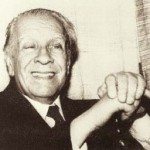 Jorge Luis Borges (August 24, 1899 – June 14, 1986): Jorge Luis Borges was an Argentine writer. His output includes short stories, essays, poetry, literary criticism, and translations. Borges was born on August 24, 1899 in Buenos Aires, Argentina, to an educated family descended from famous military figures in Argentina’s history; in accordance with Argentine custom, he never used his entire name. His family was comfortably wealthy, but not quite wealthy enough to live in downtown Buenos Aires. Instead, they lived in the then suburb of Palermo, famous for its knife-fights, where urban space gave way to the countryside. Due to a hereditary condition, Borges became blind in his late fifties.
Jorge Luis Borges (August 24, 1899 – June 14, 1986): Jorge Luis Borges was an Argentine writer. His output includes short stories, essays, poetry, literary criticism, and translations. Borges was born on August 24, 1899 in Buenos Aires, Argentina, to an educated family descended from famous military figures in Argentina’s history; in accordance with Argentine custom, he never used his entire name. His family was comfortably wealthy, but not quite wealthy enough to live in downtown Buenos Aires. Instead, they lived in the then suburb of Palermo, famous for its knife-fights, where urban space gave way to the countryside. Due to a hereditary condition, Borges became blind in his late fifties.
 Esref Armagan (1953 – Present): Esref is a blind painter of Turkish origin. Esref Armagan was born both unsighted and to an impoverished family. As a child and young adult he never received any formal schooling or training; however, he has taught himself to write and print. Mr. Armagan is an important figure in the history of picture-making, and in the history of knowledge. His work is remarkable. He has demonstrated for the first time that a blind person can develop on his or her own pictorial skills equaling most depictions by the sighted. This has not happened before in the history of picture-making. He has had exhibitions in Turkey, Holland and the Czech Republic. In 2004, he was the subject of a study of human perception, conducted by the psychologist John Kennedy of University of Toronto.
Esref Armagan (1953 – Present): Esref is a blind painter of Turkish origin. Esref Armagan was born both unsighted and to an impoverished family. As a child and young adult he never received any formal schooling or training; however, he has taught himself to write and print. Mr. Armagan is an important figure in the history of picture-making, and in the history of knowledge. His work is remarkable. He has demonstrated for the first time that a blind person can develop on his or her own pictorial skills equaling most depictions by the sighted. This has not happened before in the history of picture-making. He has had exhibitions in Turkey, Holland and the Czech Republic. In 2004, he was the subject of a study of human perception, conducted by the psychologist John Kennedy of University of Toronto.
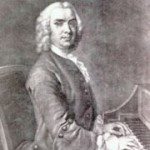 John Stanley (January 17, 1712 – May 19, 1786): John Stanley was an English composer and organist. Stanley, who was blind from an early age, studied music with Maurice Greene and held a number of organist appointments in London, such as St Andrew’s, Holborn from 1726. He was a friend of George Frideric Handel, and following Handel’s death, Stanley joined first with John Christopher Smith and later with Thomas Linley to continue the series of oratorio concerts Handel had established, and succeeded him as a governor of the Foundling Hospital.
John Stanley (January 17, 1712 – May 19, 1786): John Stanley was an English composer and organist. Stanley, who was blind from an early age, studied music with Maurice Greene and held a number of organist appointments in London, such as St Andrew’s, Holborn from 1726. He was a friend of George Frideric Handel, and following Handel’s death, Stanley joined first with John Christopher Smith and later with Thomas Linley to continue the series of oratorio concerts Handel had established, and succeeded him as a governor of the Foundling Hospital.
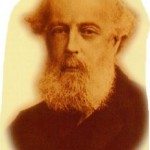 Thomas Rhodes Armitage (April 2, 1824 – October 23, 1890): Thomas was a British physician, and founder of the Royal National Institute of Blind People. He was born in Sussex into a family of wealthy Yorkshire industrialists. He was raised at Avranches in France, and at Frankfurt and Offenbach in Germany. He attended the Sorbonne and King’s College London. He became a physician, practicing at the Marylebone Dispensary, in the Crimean War, and as a private consultant in London. He was forced to abandon his medical career because of deteriorating vision, eventually becoming blind. Armitage decided to help make literature available to blind people through embossed type. He formed the “British and Foreign Society for Improving the Embossed Literature of the Blind”, later the “British and Foreign Blind Association for Promoting the Education and Employment of the Blind” and (after his death) the “National Institute for the Blind”. This group decided to adopt the system of Louis Braille, and Armitage worked tirelessly for the adoption of Braille.
Thomas Rhodes Armitage (April 2, 1824 – October 23, 1890): Thomas was a British physician, and founder of the Royal National Institute of Blind People. He was born in Sussex into a family of wealthy Yorkshire industrialists. He was raised at Avranches in France, and at Frankfurt and Offenbach in Germany. He attended the Sorbonne and King’s College London. He became a physician, practicing at the Marylebone Dispensary, in the Crimean War, and as a private consultant in London. He was forced to abandon his medical career because of deteriorating vision, eventually becoming blind. Armitage decided to help make literature available to blind people through embossed type. He formed the “British and Foreign Society for Improving the Embossed Literature of the Blind”, later the “British and Foreign Blind Association for Promoting the Education and Employment of the Blind” and (after his death) the “National Institute for the Blind”. This group decided to adopt the system of Louis Braille, and Armitage worked tirelessly for the adoption of Braille.
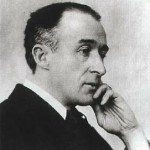 Frederick Delius (January 29, 1862 – June 10, 1934): Delius was an English composer born in Bradford in the West Riding of Yorkshire in the north of England. Although born in England and educated at Bradford Grammar School, Frederick Delius felt little attraction for the country of his birth and spent most of his life abroad, in the United States and the continent of Europe, chiefly in France. Nonetheless his music has been described as ‘extremely redolent of the soil of Britain and characteristic of the finer elements of the national spirit’ by Felix Aprahamian.
Frederick Delius (January 29, 1862 – June 10, 1934): Delius was an English composer born in Bradford in the West Riding of Yorkshire in the north of England. Although born in England and educated at Bradford Grammar School, Frederick Delius felt little attraction for the country of his birth and spent most of his life abroad, in the United States and the continent of Europe, chiefly in France. Nonetheless his music has been described as ‘extremely redolent of the soil of Britain and characteristic of the finer elements of the national spirit’ by Felix Aprahamian.
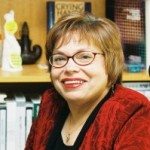 Judith E. Heumann (1947 – Present): Judy Heumann is an American disability rights activist. An internationally recognized leader in the disability community, Heumann is a lifelong civil rights advocate for disadvantaged people. Her work with governments and non governmental organizations (NGOs) has produced significant contributions since the 1970s to the development of human rights legislation and policies benefiting children and adults with disabilities, and to the international development of the independent living movement. Heumann’s commitment to disability rights stems from her personal experiences. She had polio at the age of 18 months, and has used a wheelchair most of her life. In 1970 Heumann and several friends with disabilities founded Disabled in Action, an organization that focused on securing the protection of people with disabilities under civil rights laws. While serving as a legislative assistant to the chairperson of the U.S. Senate Committee on Labor and Public Welfare, in 1974 she helped develop legislation that became the Individuals with Disabilities Education Act. An early leader in the Independent Living Movement, she then moved to Berkeley where she served as deputy director of the Center for Independent Living. She also organized the sit-ins at the U.S. Department of Health Education, and Welfare offices in San Francisco and around the U.S. which resulted in HEW Secretary Joseph Califano signing the Rehabilitation Act’s Section 504 regulations. She co-founded the World Institute on Disability with Ed Roberts and Joan Leon in 1983, serving as co-director until 1993. Heumann served in the Clinton Administration as Assistant Secretary of the Office of Special Education and Rehabilitation Services at the US Department of Education from 1993 to 2001.
Judith E. Heumann (1947 – Present): Judy Heumann is an American disability rights activist. An internationally recognized leader in the disability community, Heumann is a lifelong civil rights advocate for disadvantaged people. Her work with governments and non governmental organizations (NGOs) has produced significant contributions since the 1970s to the development of human rights legislation and policies benefiting children and adults with disabilities, and to the international development of the independent living movement. Heumann’s commitment to disability rights stems from her personal experiences. She had polio at the age of 18 months, and has used a wheelchair most of her life. In 1970 Heumann and several friends with disabilities founded Disabled in Action, an organization that focused on securing the protection of people with disabilities under civil rights laws. While serving as a legislative assistant to the chairperson of the U.S. Senate Committee on Labor and Public Welfare, in 1974 she helped develop legislation that became the Individuals with Disabilities Education Act. An early leader in the Independent Living Movement, she then moved to Berkeley where she served as deputy director of the Center for Independent Living. She also organized the sit-ins at the U.S. Department of Health Education, and Welfare offices in San Francisco and around the U.S. which resulted in HEW Secretary Joseph Califano signing the Rehabilitation Act’s Section 504 regulations. She co-founded the World Institute on Disability with Ed Roberts and Joan Leon in 1983, serving as co-director until 1993. Heumann served in the Clinton Administration as Assistant Secretary of the Office of Special Education and Rehabilitation Services at the US Department of Education from 1993 to 2001.
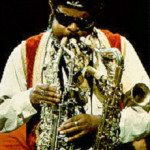 Rahsaan Roland Kirk (August 7, 1936 – December 5, 1977): Rahsaan was an American jazz multi-instrumentalist, playing tenor saxophone, flute and other reed instruments. He was perhaps best known for his vitality on stage, where virtuoso improvisation was accompanied by comic banter, political ranting and his famous ability to play a number of instruments simultaneously. Kirk was also very political, using the stage to talk on black history, civil rights and other issues, which he was always capable of tipping over into high comedy. He went blind at an early age due to poor medical treatment.
Rahsaan Roland Kirk (August 7, 1936 – December 5, 1977): Rahsaan was an American jazz multi-instrumentalist, playing tenor saxophone, flute and other reed instruments. He was perhaps best known for his vitality on stage, where virtuoso improvisation was accompanied by comic banter, political ranting and his famous ability to play a number of instruments simultaneously. Kirk was also very political, using the stage to talk on black history, civil rights and other issues, which he was always capable of tipping over into high comedy. He went blind at an early age due to poor medical treatment.
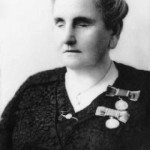 Matilda Ann Aston (December 11, 1873 – November 1, 1947): better known as Tilly Aston, she was a blind Australian writer and teacher, who founded the Victorian Association of Braille Writers, and later went on to establish the Association for the Advancement of the Blind, with herself as secretary. She is remembered for her achievements in promoting the rights of vision impaired people. Aston was also a prolific writer, particularly of poetry and prose sketches, though her writing was often interrupted by her teaching and other activities.
Matilda Ann Aston (December 11, 1873 – November 1, 1947): better known as Tilly Aston, she was a blind Australian writer and teacher, who founded the Victorian Association of Braille Writers, and later went on to establish the Association for the Advancement of the Blind, with herself as secretary. She is remembered for her achievements in promoting the rights of vision impaired people. Aston was also a prolific writer, particularly of poetry and prose sketches, though her writing was often interrupted by her teaching and other activities.
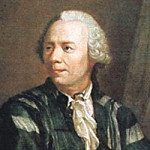 Leonhard Euler (April 15, 1707 – September 18, 1783): Leonhard was a pioneering Swiss mathematician and physicist who spent most of his life in Russia and Germany. Euler made important discoveries in fields as diverse as calculus and graph theory. He also introduced much of the modern mathematical terminology and notation, particularly for mathematical analysis, such as the notion of a mathematical function. He is also renowned for his work in mechanics, optics, and astronomy. Euler’s left eye became blind from cataract and suffered from eyestrain caused by a strong fever in 1735.
Leonhard Euler (April 15, 1707 – September 18, 1783): Leonhard was a pioneering Swiss mathematician and physicist who spent most of his life in Russia and Germany. Euler made important discoveries in fields as diverse as calculus and graph theory. He also introduced much of the modern mathematical terminology and notation, particularly for mathematical analysis, such as the notion of a mathematical function. He is also renowned for his work in mechanics, optics, and astronomy. Euler’s left eye became blind from cataract and suffered from eyestrain caused by a strong fever in 1735.
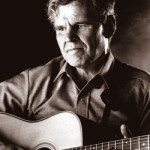 Doc Watson (March 3, 1923 – May 29, 2012): Doc Watson is an American guitar player, songwriter and singer of bluegrass, folk, country, blues and gospel music. An eye infection caused Watson to lose his vision before his first birthday. Despite this, he was taught by his parents to work hard and care for himself. He attended North Carolina’s school for the visually impaired, The Governor Morehead School, in Raleigh NC. The first song Doc ever learned to play was “When Roses Bloom in Dixieland”. By the time he reached his adult years Doc had become a prolific acoustic and electric guitar player.
Doc Watson (March 3, 1923 – May 29, 2012): Doc Watson is an American guitar player, songwriter and singer of bluegrass, folk, country, blues and gospel music. An eye infection caused Watson to lose his vision before his first birthday. Despite this, he was taught by his parents to work hard and care for himself. He attended North Carolina’s school for the visually impaired, The Governor Morehead School, in Raleigh NC. The first song Doc ever learned to play was “When Roses Bloom in Dixieland”. By the time he reached his adult years Doc had become a prolific acoustic and electric guitar player.
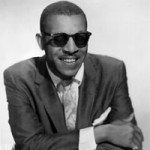 Al Hibbler (August 16, 1915 – April 24, 2001): Hibber was an American vocalist with several pop hits. He is best known for his million selling recording of “Unchained Melody” (1955). He achieved national prominence in the United States with the Ellington orchestra in the mid 1940s, and went on to build a substantial career, which included continuing involvement with jazz musicians. Born Albert George Hibbler in Tyro, Mississippi, he was blind from birth. Hibbler attended a school for the blind in Little Rock, Arkansas where he joined the school choir. He won an amateur talent contest in Memphis, Tennessee, where he first worked with local bands and started his own band. He died in Chicago in 2001, at the age of 85. He was survived by a sister and a brother. Hibbler has a star at 1650 Vine Street on the Hollywood Walk of Fame.
Al Hibbler (August 16, 1915 – April 24, 2001): Hibber was an American vocalist with several pop hits. He is best known for his million selling recording of “Unchained Melody” (1955). He achieved national prominence in the United States with the Ellington orchestra in the mid 1940s, and went on to build a substantial career, which included continuing involvement with jazz musicians. Born Albert George Hibbler in Tyro, Mississippi, he was blind from birth. Hibbler attended a school for the blind in Little Rock, Arkansas where he joined the school choir. He won an amateur talent contest in Memphis, Tennessee, where he first worked with local bands and started his own band. He died in Chicago in 2001, at the age of 85. He was survived by a sister and a brother. Hibbler has a star at 1650 Vine Street on the Hollywood Walk of Fame.
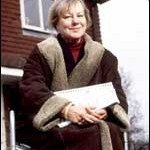 Susan Townsend (April 2, 1946 – Present): Susan is an English novelist and playwright, best known as the author of the Adrian Mole books. Her writing often combines comedy with social commentary, though she has written purely dramatic works as well. Townsend has suffered from diabetes for many years, as a result of which she was registered blind in 2001 and she has woven this theme into her work. On February 25, 2009, Leicester City Council announced that Townsend will be given the Honorary Freedom of Leicester.
Susan Townsend (April 2, 1946 – Present): Susan is an English novelist and playwright, best known as the author of the Adrian Mole books. Her writing often combines comedy with social commentary, though she has written purely dramatic works as well. Townsend has suffered from diabetes for many years, as a result of which she was registered blind in 2001 and she has woven this theme into her work. On February 25, 2009, Leicester City Council announced that Townsend will be given the Honorary Freedom of Leicester.
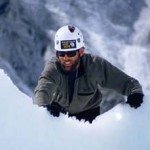 Erik Weihenmayer (September 23, 1968 – Present): Weihenmayer is the first blind person to reach the summit of Mount Everest, on May 25, 2001. He also completed the Seven Summits in September 2002. His story was covered in a Time article in June 2001 titled “Blind to Failure”. He is author of “Touch the Top of the World: A Blind Man’s Journey to Climb Farther Than the Eye can See”, his autobiography. Erik is an acrobatic skydiver, long distance biker, marathon runner, skier, mountaineer, ice climber, and rock climber. He is a friend of Sabriye Tenberken and Paul Kronenberg, the co-founders of Braille Without Borders, whom he visited in Tibet to climb with them and teenagers from the school for the blind. In addition, Erik is an active speaker on the lecture circuit. He is represented by Leading Authorities speakers bureau.
Erik Weihenmayer (September 23, 1968 – Present): Weihenmayer is the first blind person to reach the summit of Mount Everest, on May 25, 2001. He also completed the Seven Summits in September 2002. His story was covered in a Time article in June 2001 titled “Blind to Failure”. He is author of “Touch the Top of the World: A Blind Man’s Journey to Climb Farther Than the Eye can See”, his autobiography. Erik is an acrobatic skydiver, long distance biker, marathon runner, skier, mountaineer, ice climber, and rock climber. He is a friend of Sabriye Tenberken and Paul Kronenberg, the co-founders of Braille Without Borders, whom he visited in Tibet to climb with them and teenagers from the school for the blind. In addition, Erik is an active speaker on the lecture circuit. He is represented by Leading Authorities speakers bureau.
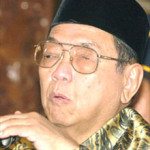 Abdurrahman Wahid (September 7, 1940 – Present): Also known as Gus Dur, Abdurrahman is an Indonesian Muslim religious and political leader who served as the President of Indonesia from 1999 to 2001. The long-time president of the Nahdlatul Ulama and the founder of the National Awakening Party (PKB), Wahid was the first elected president of Indonesia after the fall of the Suharto regime in 1998.
Abdurrahman Wahid (September 7, 1940 – Present): Also known as Gus Dur, Abdurrahman is an Indonesian Muslim religious and political leader who served as the President of Indonesia from 1999 to 2001. The long-time president of the Nahdlatul Ulama and the founder of the National Awakening Party (PKB), Wahid was the first elected president of Indonesia after the fall of the Suharto regime in 1998.
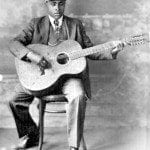 William Samuel McTell (May 5, 1898 – August 19, 1959): Better known as Blind Willie McTell, he was an influential American blues singer, songwriter, and guitarist. He was a twelve-string finger picking Piedmont blues guitarist, and recorded 149 songs between 1927 and 1956. Born William Samuel McTier in Thomson, Georgia, blind in one eye, McTell had lost his remaining vision by late childhood, but became an adept reader of Braille. He showed proficiency in music from an early age and learned to play the six-string guitar as soon as he could. A blues festival in McTell’s honor is held annually in his birthplace, Thomson, Georgia. He was inducted into the Blues Foundation’s Hall of Fame in 1981.
William Samuel McTell (May 5, 1898 – August 19, 1959): Better known as Blind Willie McTell, he was an influential American blues singer, songwriter, and guitarist. He was a twelve-string finger picking Piedmont blues guitarist, and recorded 149 songs between 1927 and 1956. Born William Samuel McTier in Thomson, Georgia, blind in one eye, McTell had lost his remaining vision by late childhood, but became an adept reader of Braille. He showed proficiency in music from an early age and learned to play the six-string guitar as soon as he could. A blues festival in McTell’s honor is held annually in his birthplace, Thomson, Georgia. He was inducted into the Blues Foundation’s Hall of Fame in 1981.
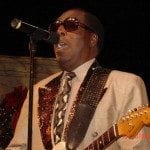 Clarence Carter (January 14, 1936 – Present): Clarence is a blind American soul singer and musician. Born in Montgomery, Alabama on 14 January, 1936, Carter attended the Alabama School for the Blind in Talladega, Alabama, and Alabama State College in Montgomery, graduating in August 1960 with a Bachelor of Science degree in music.
Clarence Carter (January 14, 1936 – Present): Clarence is a blind American soul singer and musician. Born in Montgomery, Alabama on 14 January, 1936, Carter attended the Alabama School for the Blind in Talladega, Alabama, and Alabama State College in Montgomery, graduating in August 1960 with a Bachelor of Science degree in music.
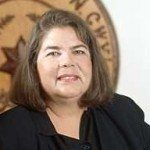 Wilma Pearl Mankiller (November 18, 1945 – Present): Born in Tahlequah, Oklahoma, Wilma was the first female Chief of the Cherokee Nation. She served as the Principal Chief for ten years from 1985 to 1995. The family surname, Mankiller, is a traditional Cherokee military rank and is pronounced “Asgaya-dihi” in Cherokee. By 1983, she was elected deputy chief of the Cherokee Nation, alongside Ross Swimmer, who was serving his third consecutive term as principal chief. In 1985, Chief Swimmer resigned to take the position as head of the Bureau of Indian Affairs. This allowed Mankiller to become the first female principal chief. She was freely elected in 1987, and re-elected again in 1991 in a landslide victory, collecting 83% of the vote. In 1995, Wilma chose not to run again for Chief largely due to health problems.
Wilma Pearl Mankiller (November 18, 1945 – Present): Born in Tahlequah, Oklahoma, Wilma was the first female Chief of the Cherokee Nation. She served as the Principal Chief for ten years from 1985 to 1995. The family surname, Mankiller, is a traditional Cherokee military rank and is pronounced “Asgaya-dihi” in Cherokee. By 1983, she was elected deputy chief of the Cherokee Nation, alongside Ross Swimmer, who was serving his third consecutive term as principal chief. In 1985, Chief Swimmer resigned to take the position as head of the Bureau of Indian Affairs. This allowed Mankiller to become the first female principal chief. She was freely elected in 1987, and re-elected again in 1991 in a landslide victory, collecting 83% of the vote. In 1995, Wilma chose not to run again for Chief largely due to health problems.
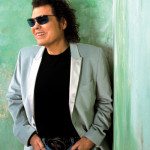 Ronnie Lee Milsap (January 16, 1945 -Present): Born in Robbinsville, North Carolina, Milsap is an American country music singer and musician. Ronnie Milsap was born with a congenital defect, leaving him almost completely blind. He was one of country’s most popular and influential artists in the 1970s and 1980s. Ronnie became country music’s first blind superstar. He was also one of the most successful country crossover singers of his time, appealing to both country and pop markets. Milsap’s biggest crossover hits include “It Was Almost Like a Song”, “Smoky Mountain Rain”, “(There’s) No Gettin’ Over Me”, “I Wouldn’t Have Missed It for the World”, “Any Day Now”, and “Stranger in My House”, among others. He is credited with forty #1 hits in country music, third to George Strait and Conway Twitty.
Ronnie Lee Milsap (January 16, 1945 -Present): Born in Robbinsville, North Carolina, Milsap is an American country music singer and musician. Ronnie Milsap was born with a congenital defect, leaving him almost completely blind. He was one of country’s most popular and influential artists in the 1970s and 1980s. Ronnie became country music’s first blind superstar. He was also one of the most successful country crossover singers of his time, appealing to both country and pop markets. Milsap’s biggest crossover hits include “It Was Almost Like a Song”, “Smoky Mountain Rain”, “(There’s) No Gettin’ Over Me”, “I Wouldn’t Have Missed It for the World”, “Any Day Now”, and “Stranger in My House”, among others. He is credited with forty #1 hits in country music, third to George Strait and Conway Twitty.
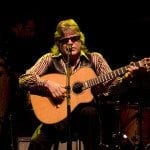 José Montserrate Feliciano García (September 10, 1945 – Present): is a Puerto Rican singer, virtuoso guitarist and composer, known for many international hits including the 1970 holiday single “Feliz Navidad”. Born in Lares, Puerto Rico, Feliciano was one of twelve children and was first exposed to music at the age of three. His blindness is a result of congenital glaucoma. Feliciano holds the distinction of being one of the few singers to have enjoyed success both in Spanish language music and in English language rock and roll. In 1965 and 1966, he released his first albums “The Voice and Guitar of Jose Feliciano” and “A Bag Full of Soul”, two folk-pop-soul albums that showcased his talent on radio across the USA, where he was described as a “10 finger wizard”. In 1970, he wrote and released an album of Christmas music, Feliz Navidad, which may be deemed to be his most famous recording. He received a star in the Hollywood Walk of Fame in 1987, and continued as a very popular singer during the 1980’s. In 1995, Feliciano was honored by the City of New York, which re-named Public School 155 the Jose Feliciano Performing Arts School.
José Montserrate Feliciano García (September 10, 1945 – Present): is a Puerto Rican singer, virtuoso guitarist and composer, known for many international hits including the 1970 holiday single “Feliz Navidad”. Born in Lares, Puerto Rico, Feliciano was one of twelve children and was first exposed to music at the age of three. His blindness is a result of congenital glaucoma. Feliciano holds the distinction of being one of the few singers to have enjoyed success both in Spanish language music and in English language rock and roll. In 1965 and 1966, he released his first albums “The Voice and Guitar of Jose Feliciano” and “A Bag Full of Soul”, two folk-pop-soul albums that showcased his talent on radio across the USA, where he was described as a “10 finger wizard”. In 1970, he wrote and released an album of Christmas music, Feliz Navidad, which may be deemed to be his most famous recording. He received a star in the Hollywood Walk of Fame in 1987, and continued as a very popular singer during the 1980’s. In 1995, Feliciano was honored by the City of New York, which re-named Public School 155 the Jose Feliciano Performing Arts School.
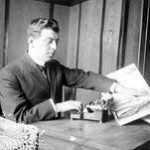 Dr. Jacob Bolotin (January 3, 1888 – April 1, 1924): Born in 1888 to a poor immigrant family in Chicago, Jacob Bolotin fought prejudice and misconceptions about the capabilities of blind people in order to win acceptance to medical school and then into the medical profession. He was one of the most respected physicians in Chicago in the early twentieth century, particularly well known for his expertise on diseases of the heart and lungs. Dr. Jacob Bolotin was the first man born totally blind to become fully licensed to practice medicine.
Dr. Jacob Bolotin (January 3, 1888 – April 1, 1924): Born in 1888 to a poor immigrant family in Chicago, Jacob Bolotin fought prejudice and misconceptions about the capabilities of blind people in order to win acceptance to medical school and then into the medical profession. He was one of the most respected physicians in Chicago in the early twentieth century, particularly well known for his expertise on diseases of the heart and lungs. Dr. Jacob Bolotin was the first man born totally blind to become fully licensed to practice medicine.
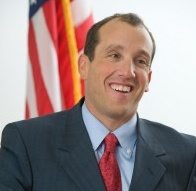 Richard H. Bernstein (November 9, 1973 – Present): An American lawyer, practicing at The Law Offices of Sam Bernstein. He also is an adjunct professor at the University of Michigan and served on the Wayne State University Board of Governors for one eight-year term, including two years as vice chair and two more as chair. Bernstein has been classified as legally blind since birth, as a result of retinitis pigmentosa. Richard Bernstein is also an avid runner and advocate for disability rights.
Richard H. Bernstein (November 9, 1973 – Present): An American lawyer, practicing at The Law Offices of Sam Bernstein. He also is an adjunct professor at the University of Michigan and served on the Wayne State University Board of Governors for one eight-year term, including two years as vice chair and two more as chair. Bernstein has been classified as legally blind since birth, as a result of retinitis pigmentosa. Richard Bernstein is also an avid runner and advocate for disability rights.
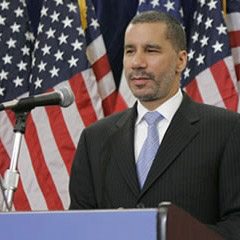 David Alexander Paterson (May 20, 1954 – Present): American politician and the former Governor of New York. He is the first African American governor of New York and also the second legally blind governor of any U.S. state after Bob C. Riley, who was Governor of Arkansas for eleven days in January 1975. At the age of three months, Paterson contracted an ear infection which spread to his optic nerve, leaving him with no sight in his left eye and severely limited vision in his right eye.
David Alexander Paterson (May 20, 1954 – Present): American politician and the former Governor of New York. He is the first African American governor of New York and also the second legally blind governor of any U.S. state after Bob C. Riley, who was Governor of Arkansas for eleven days in January 1975. At the age of three months, Paterson contracted an ear infection which spread to his optic nerve, leaving him with no sight in his left eye and severely limited vision in his right eye.
- compiled & published by Dr Dhaval Patel MD AIIMS
